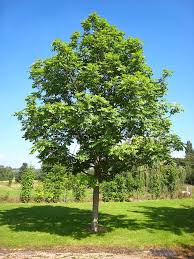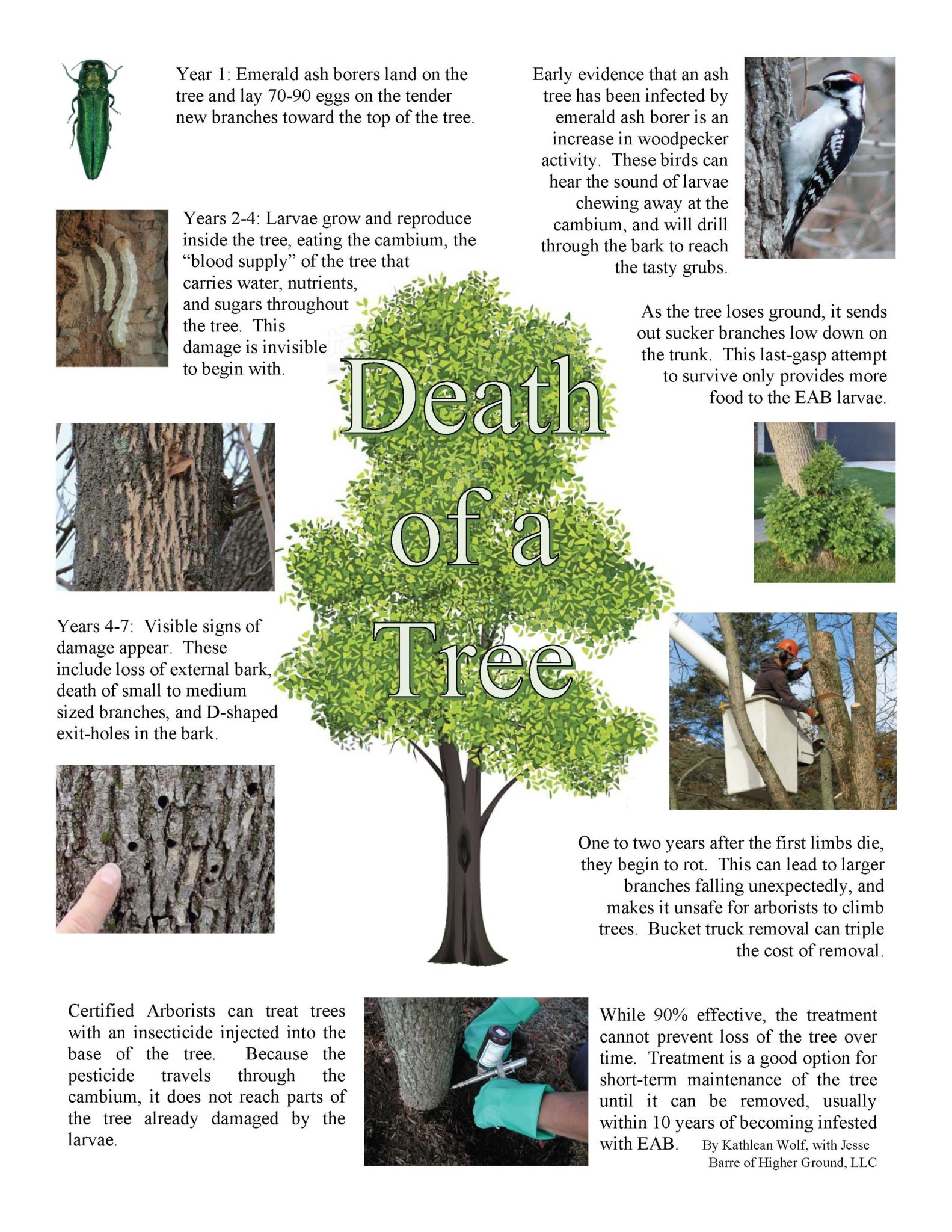
By Kathlean Wolf
Northside News
 Throughout the Northside, a threat hangs over many homes and apartments — dead and dying ash trees, victims of the invasive emerald ash borer (EAB). The demise of a mature ash tree means loss of shade and the beauty of the tree, but many homeowners are unaware that delaying the removal of these trees could have expensive or even dangerous consequences.
Throughout the Northside, a threat hangs over many homes and apartments — dead and dying ash trees, victims of the invasive emerald ash borer (EAB). The demise of a mature ash tree means loss of shade and the beauty of the tree, but many homeowners are unaware that delaying the removal of these trees could have expensive or even dangerous consequences.
EAB is a small green insect which lays its eggs in the bark of ash trees. When the eggs hatch, the larvae eat the cambium of the tree. Cambium carries water and nutrients throughout the tree. This inner bark is the tree’s equivalent of a circulatory system. When larvae cut through this layer, water cannot move from roots outward to leaves, and the branches above will die. Pesticide treatment can delay tree death for 10‒15 years, but untreated trees die within 4‒6 years. Eventually, 100 percent of the ash trees in Madison will die of the infestation.
The Northside was the first in Madison to see wholesale removal of ash trees along streets and in parks due to EAB. Eric Knepp, superintendent of Madison Parks Division, began work in 2013 to coordinate the removal of ash trees from high-traffic areas of parks. The city forestry office fielded many angry complaints; residents protested that city arborists should wait until the trees are sick before initiating removal, giving young trees a chance to grow up and take their place.
“Simple logistics made this impossible,” Knepp explained. “With tens of thousands of trees to be removed on the Northside alone, and a limited number of tree-removal crews and equipment available, any delay could cause arborists to fall behind, leaving neighborhoods elsewhere in Madison endangered.” In Detroit, where EAB first made its appearance, trees were dying wholesale before arborists realized the extent of the damage. Large ash tree limbs began falling into streets, on top of cars, and in a few instances, injuring pedestrians. “These trees can drop 30-foot limbs,” noted Knepp, who is deeply concerned for homeowners with ash trees on their properties.
As the safety of Northside streets has been assured by these preemptive tree removals, the fate of private yards has been left up to the homeowner. Many Northside residents find it difficult to afford tree removal. “It can cost thousands of dollars to remove a large tree,” said a resident of Brentwood Village. “If it falls on your house, it’s covered by insurance.” But is this logic sound? “Some policies contain language which states that the homeowner has a duty to maintain the property,” said Ellen Melchionni, president of the New York Insurance Association. “If the tree falls due to extensive rot or deterioration, or if the property has been poorly maintained, the claim may not be covered.” By putting off the tree removal, homeowners may be putting themselves at risk, financially and physically.
EAB arrived in Madison approximately five years ago, and untreated trees are due to start falling at any time. If Northside property owners don’t start tackling the issue immediately, we can expect to hear the explosive sound of falling limbs more frequently in the next few years. The time to act is now.